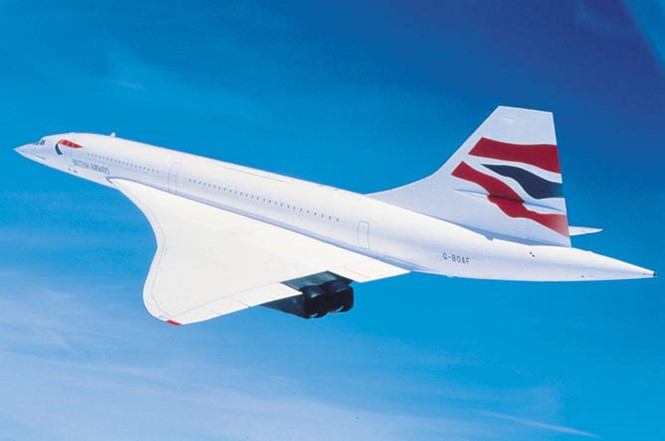Rewind: Concorde

Plagued by pricing concerns and crashes, the Concorde was retired in 2003. Could a new brand positioning or brand strategy have saved the super-fast jet?
Sarah Macaulay, marketing manager, William Grant & Sons Distillers Ltd
There is no doubt that Concorde is a stunning feat of technical and glamorous engineering. It gave its passengers the opportunity to fly in luxury, and very, very quickly. Lunch in London, over the pond in time for theatre, anyone? The allure of ‘brand Concorde’ is still apparent, and it could attract a strong consumer base.
There are a number of serious issues for Concorde to address if it were to return to commercial flight. The accident record should be tackled head on. The inflated cost to experience Concorde is another. The initial communications plan would be to strictly reassure that safety is paramount. The next would be to highlight the numerous benefits to justify its price point. Concorde was a jet, and indeed a ‘lifestyle,’ before its time. Since it’s decommissioning in 2003 there has been a global explosion of high net worth individuals (HNWI). Concorde could provide a luxurious,
personal and bespoke service that many wealthy travellers would pay for. In today’s world where time is seen as the ultimate in luxury goods, its benefits could be viewed as ‘manna from heaven’ for many global ‘money-rich and time-poor’ HNWI.
Nick Liddell, strategy director, Dragon Rouge
Even with the benefit of hindsight, it’s difficult to say that there was much wrong with Concorde’s brand strategy or positioning. Only 14 ever entered commercial service. Each plane could only carry 100 passengers. Prices were inevitably astronomical. So there wasn’t much wriggle room for the brand strategy or positioning: this had to be a luxury experience to rival any other. And despite a tiny fuselage and seats that would have felt snug even to Posh Spice, accounts suggest that Concorde succeeded in living up to its ultra-premium positioning. Passengers could gaze at the earth’s curvature from 60,000 feet as they dined on a three-course meal and quaffed their choice of four champagnes.
The Concorde’s brand positioning may not have been terribly clever, but it did have the twin merits of being simple and commercially successful. It is estimated that Concorde generated a net profit of around £500m over its lifetime. There was undoubtedly a halo effect fo r the British Airways brand, as well as the opportunity to upgrade loyal business and first class customers to an experience no other airline loyalty scheme could aspire to.
So could a different brand strategy or positioning have saved Concorde? No. They were ingredients in its success, but not its downfall. Brand positioning can’t compensate for the death of 109 people. The Paris crash in 2000 turned Concorde from a valuable, reliable asset to a costly, risky liability. The death of Concorde isn’t the result of someone’s failure to grasp the subtleties of branding, so much as a reflection of the changing economics of the airline industry. Value has prevailed over sentiment.
Richard Baker, head of internal communications and employee engagement, Carlsberg Group
I’m no expert on aviation, but I do know that Concorde was costly to run, compared to more normal types of aircraft. However, the prestige associated meant that airlines could charge fares to match. One of the concerns of the airlines at the time was whether these customers would happily travel first class on the more conventional aircraft. The airline was given its answer in the wake of the Paris air crash; customers ‘downgraded’ to first class. This is one that the experts tend to agree on; it was simply a question of economics, not branding. I guess there’s no point having a world-beating brand that isn’t a viable business proposition!
Rob Meyerson, head of naming, HP
It wasn’t just high prices and a crash that ended the Concorde’s 24-year, supersonic journey. Other contributing factors included the 9/11 terrorist attacks (about a year after the Concorde crash) and a general slump in the airline industry. A simple change in name or visual identity couldn’t have trumped all the difficulties that led to the jet’s grounding. In fact, this kind of superficial rebrand might have been seen as an attempt to dodge responsibility and con customers into forgetting the tragedy, thereby hurting the plane’s chances of carrying passengers again.
Deeper changes to the organisation behind the Concorde brand might have saved the jet – but it’s not entirely clear which organisation(s) that would have been, since the Concorde was not a company but an airliner created and flown by multiple companies. Had those companies somehow been able to speak with a unified, consistent voice in the wake of the tragedy, had they been able to clearly and quickly identify the cause of the crash (authorities eventually traced it back to a metal strip left on the runway by a Continental Airlines DC-10), had they taken responsibility and explained how future incidents would be avoided – had they done all this successfully, only then could a shift in strategy have helped. If that shift had been reflective of these deeper changes and realised not only through communications but throughout the passenger and employee experience, maybe it could have kept the Concorde brand in flight, if not cruising along at Mach 2.


